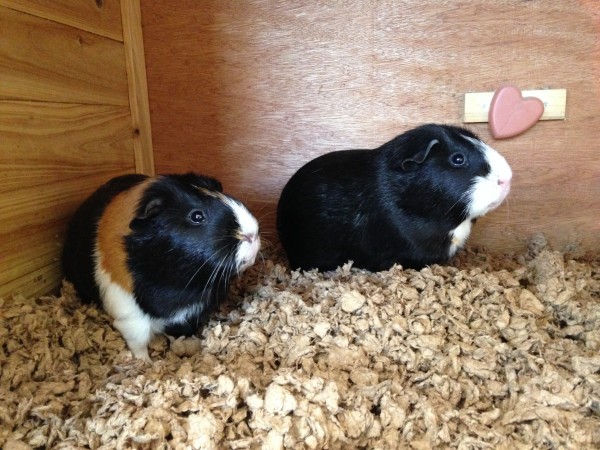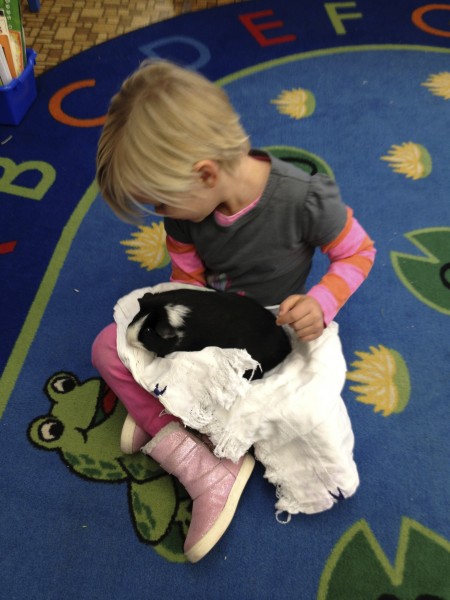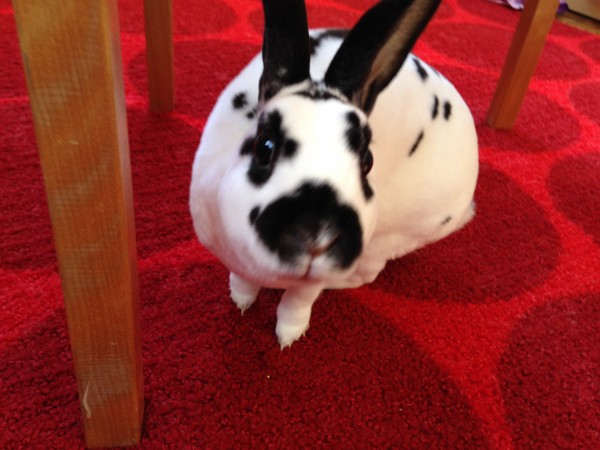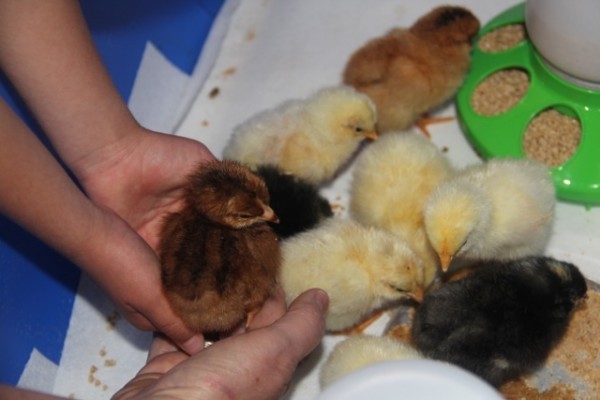Thinking About a Classroom Pet?
At RHCNS, we currently have two guinea pigs, a rabbit, hermit crabs and fish as our long-term residents. We are also hatching chicken eggs, caterpillars, lady bugs and praying mantises.
Everyday the children take responsibility for feeding the “critters.” Opening the hutch latches and food containers requires fine motor dexterity and hand strength. One to one correspondence is reinforced with the reminder of “One scoop for one rabbit, two scoops for two guinea pigs.” Of course, everyone loves petting them! The benefits are many.
HOWEVER! Animals are not toys, nor educational materials. They are living creatures who need more than just some food and water everyday!
Before you rush out and get a pet, really examine whether or not, you as a classroom teacher have the time and money to take on the responsibility.
Time: The animals take time everyday. I probably spend at least 15 minutes in the mornings cleaning the cages before the children arrive. As preschoolers, they are not responsible enough to handle the mess. Periodically the hutch needs to be thoroughly cleaned and scrubbed.
Weekends and vacations: What will your plan be? I’ve never been comfortable sending the critters home with children. One blogger I’d read (before I started bookmarking, blogging, etc. so I don’t remember who it was) said it perfectly. ONE ADULT needs to be totally responsible for the animals. It’s not fair to the animals to send them home with children whose parents may not want them, may have other animals who harass them, and be subject to possible mistreatment (intentional or not) by children. If you have a classroom pet, you need to have a plan for weekends, vacations and summers.
Guinea pigs are basically walking, eating, pooping, whistling ovals. With a large cage and another guinea pig, they are quite content and happy in the classroom. Ours whistle during snack time, reminding us that they want a snack, too!
Rabbits are a bit more challenging. Bucks are smellier than does, but both need to be spayed or neutered. (Who is going to pay for the vet bills?) Rabbits also need intellectual stimulation (toys, interesting environment) and lots of exercise! I get to school at least an hour or two before the children arrive to allow Fire Bunny to run around. All electrical wires need to be raised (she once bit through our telephone wire!) The one way that rabbits are easier is that they are easily litter box trained. Fire Bunny will run, hop and jump around the room then go into her hutch, use the litter box, and come out again. Once, when I was cleaning her cage, she “helped” me by taking the tray of water I had nearby and flipped it over for me!
Money: Can you afford the bedding, food and vet bills? Both guinea pigs and rabbits need their claws trimmed periodically. Even the aquarium can be costly, as the filters sometimes need replacing or a disease sickens the fish, requiring medication.
In our classroom, I explain to the children that the animals belong to me, and I am sharing them. I take responsibility for their medical care and expenses. If we get a student who is allergic to fur, I will need to re-home the mammals.
Both PetSmart and Petco have “Pets in the Classroom” grants. I’ve used them several times, and found that while the grants are a big help, they don’t cover the entire cost, be prepared to spend more!
We have just had chicken eggs hatch in an incubator. Before I even got the eggs, however, I made sure they resulting chicks will have a safe place to go afterwards. (The farm who gave me the eggs will take the chicks back.) Chicks are not toys nor backyard pets.
I adore my animals. I’m at a stage in my life where I have the extra time and can afford the weekly bedding, etc.
So, before you get a pet in the classroom, ask yourself if you want the additional responsibility and expense of a living creature who will depend on you to live.
- Who will the primary adult caregiver be?
- Who will pay for daily upkeep and vet bills?
- What responsible adult will take care of them on weekends and vacations? (Yes, of course, children can be responsible. Ultimately however, there must be an adult who supervises.)
- Be prepared to do a lot of research. Different animals need different care. Don’t just buy hermit crabs and think a wire cage and a shell for water will do it. Hermit crabs need heat, humidity, and the right substrate in order to molt and grow!
- Are you willing to clean cages every morning?
If you’re willing to spend time and money, (and clean stinky cages) the rewards are many. Animals can enhance your curriculum, provide comfort and bring joy. Just don’t forget about the responsibility. The animals will depend on you, too!
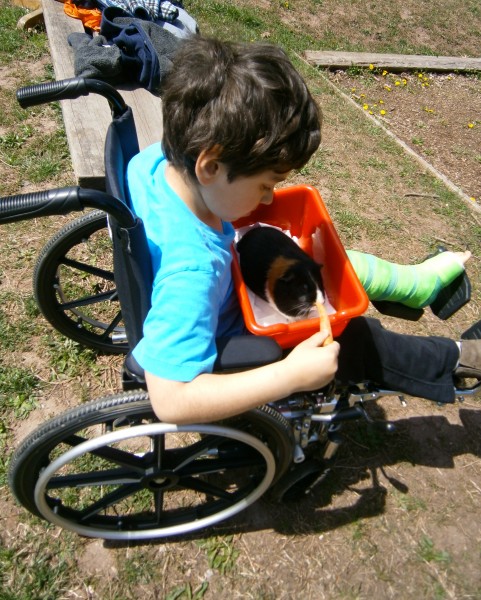 Our guinea pig, “Courtesy,” entertains a student
Our guinea pig, “Courtesy,” entertains a student
who loves to run and play, but can’t!
